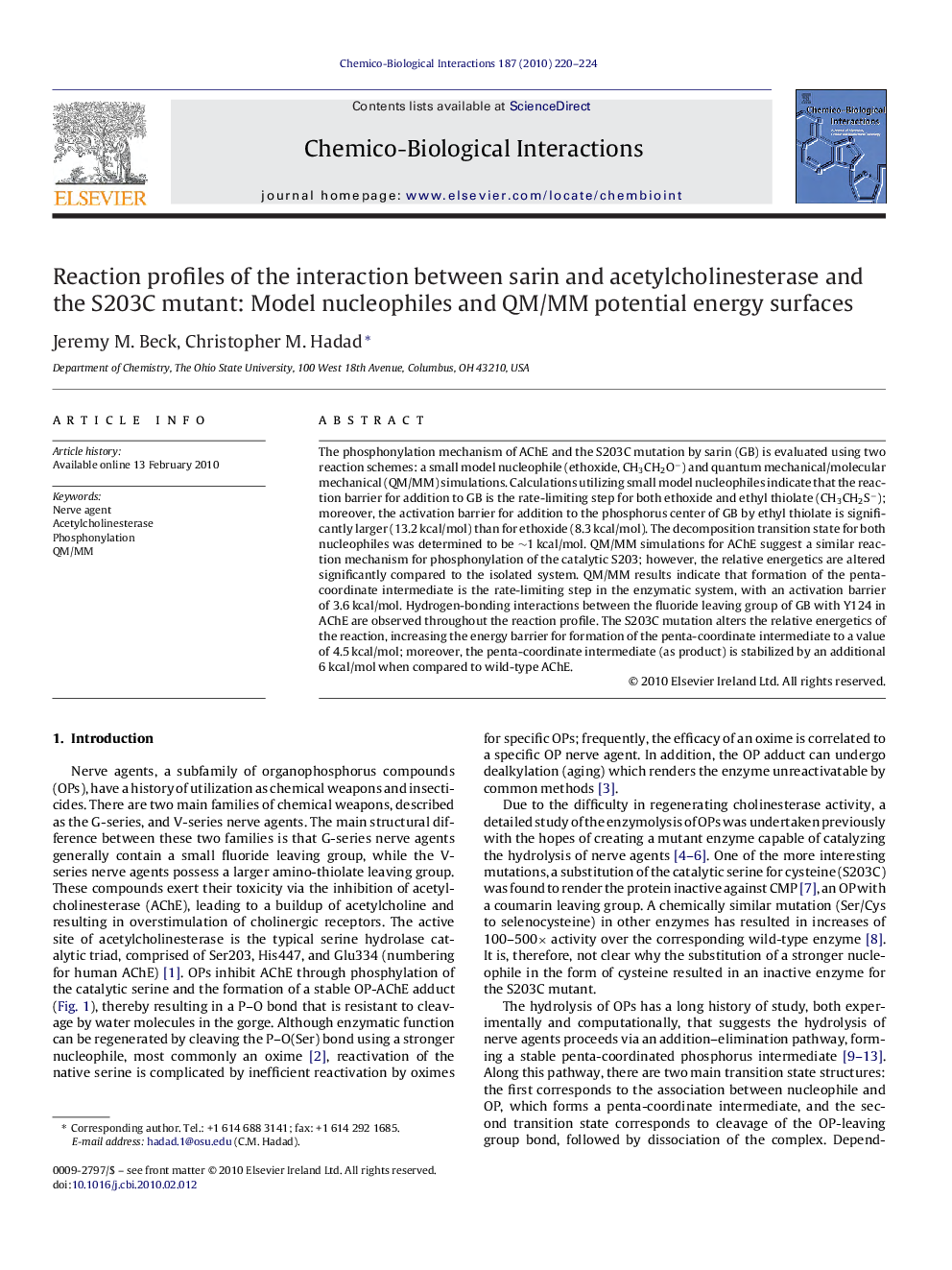| Article ID | Journal | Published Year | Pages | File Type |
|---|---|---|---|---|
| 2581781 | Chemico-Biological Interactions | 2010 | 5 Pages |
The phosphonylation mechanism of AChE and the S203C mutation by sarin (GB) is evaluated using two reaction schemes: a small model nucleophile (ethoxide, CH3CH2O−) and quantum mechanical/molecular mechanical (QM/MM) simulations. Calculations utilizing small model nucleophiles indicate that the reaction barrier for addition to GB is the rate-limiting step for both ethoxide and ethyl thiolate (CH3CH2S−); moreover, the activation barrier for addition to the phosphorus center of GB by ethyl thiolate is significantly larger (13.2 kcal/mol) than for ethoxide (8.3 kcal/mol). The decomposition transition state for both nucleophiles was determined to be ∼1 kcal/mol. QM/MM simulations for AChE suggest a similar reaction mechanism for phosphonylation of the catalytic S203; however, the relative energetics are altered significantly compared to the isolated system. QM/MM results indicate that formation of the penta-coordinate intermediate is the rate-limiting step in the enzymatic system, with an activation barrier of 3.6 kcal/mol. Hydrogen-bonding interactions between the fluoride leaving group of GB with Y124 in AChE are observed throughout the reaction profile. The S203C mutation alters the relative energetics of the reaction, increasing the energy barrier for formation of the penta-coordinate intermediate to a value of 4.5 kcal/mol; moreover, the penta-coordinate intermediate (as product) is stabilized by an additional 6 kcal/mol when compared to wild-type AChE.
